#arch of trajan
Explore tagged Tumblr posts
Text

ARCH OF TRAJAN - ROME
53 notes
·
View notes
Text
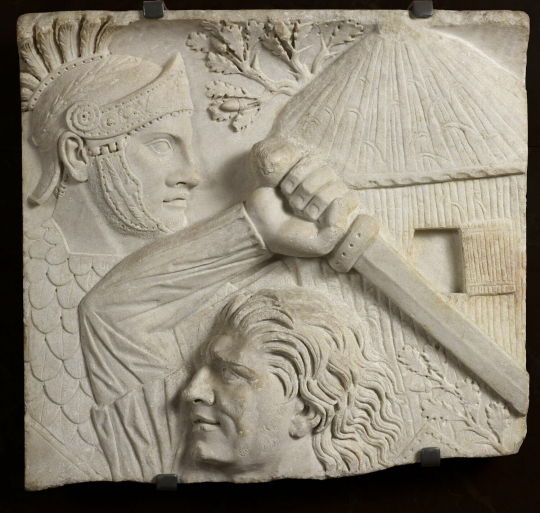
~ Architectural relief (Fight Scene).
Date: A.D. 100-125
Place of origin: Rome (Building of Trajan's Forum? Arch of Constantine?)
Period: Imperial Period
Medium: Marble
#ancient#ancient art#history#museum#archeology#ancient sculpture#roman#ancient history#archaeology#relief#fight#fight scene#architecture#trajan#forum#rome#arch of constantine#imperial period#legionary#cuirass#helmet#warrior#a.d. 100#a.d. 125
281 notes
·
View notes
Text

Roman Trajan's Arch in Timgad, Algeria
French vintage postcard
#timgad#roman trajan's#tarjeta#postkaart#sepia#roman#historic#photo#postal#briefkaart#photography#vintage#ephemera#algeria#ansichtskarte#old#postcard#french#trajan#arch#postkarte#carte postale
2 notes
·
View notes
Text

Pre and post excavation

'Arc de Triomphe de Tramugas' - Félix-Jacques Moulin (1802-1879)
The Arch of Trajan near Batna, Algeria, before excavation and restoration.
58 notes
·
View notes
Text

Rome’s Ancient Arch of Constantine Struck by Lightening
During a storm on September 3, lightning struck Rome’s Arch of Constantine, chipping the structure’s marble surface. The 1,700-year-old arch and its neighbor, the Colosseum, were two of several sites affected by the thunderstorm, which produced 2.36 inches of rain in less than an hour. Usually, the city sees a similar amount over the entire month of September.
“A lightning strike hit the arch right here and then hit the corner,” a tourist at the site told Reuters’ Alberto Lingria. “We saw this fly off,” the tourist added while pointing to a fallen block of stone.
Finished in 315 C.E., the Arch of Constantine is one of Rome’s three surviving ancient triumphal arches, each erected to honor a person or event. This arch commemorates Constantine I’s 312 victory over the emperor Maxentius. That same year, Constantine devoted himself to Christianity—the first Roman ruler to do so.
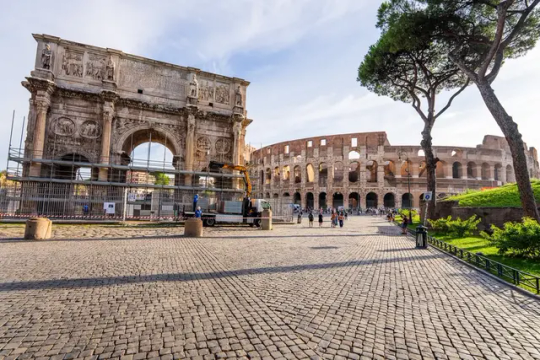
The fierce storm also felled two large trees near the Circus Maximus, flooded the Trevi Fountain and flooded the Colosseum’s subterranean tunnels, reports CNN. After lightning struck the arch, staff of the Colosseum Archaeological Park quickly gathered its dislodged pieces and placed them in a secure location, according to a statement from Italy’s Ministry of Culture.
In the days that followed, some tourists stumbled upon additional pieces on the ground.
“My American group found these fragments, and we’re handing them over to the workmen,” tour guide Serena Giuliani told the London Times’ Tom Kington on the morning of September 4.
Specialists are now examining the condition of the fragments. Officials say the damage was limited to the monument’s southern side, where unrelated restoration work had started just days earlier, allowing for quick repairs.
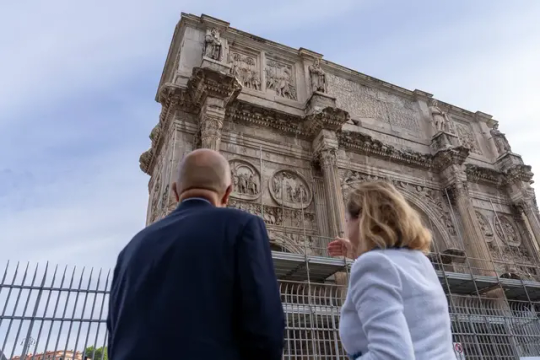

At roughly 70 feet tall and 85 feet wide, the Arch of Constantine contains three separate arches, each framed by columns. The intricately decorated structure is adorned with recycled fragments, or spolia, taken from other ancient buildings, including monuments honoring Trajan, Hadrian and Marcus Aurelius.
The arch is also decorated with carvings of Constantine, including a series of reliefs depicting his victorious fight against Maxentius in the Battle of the Milvian Bridge.
In 306, Constantine was leading Roman troops in Britain—then part of the Roman Empire—when his military declared him their emperor. His brother-in-law, Maxentius, also declared himself the emperor around the same time. After years of complex power struggles, the two rulers ultimately faced off in 312 at Rome’s Milvian Bridge, which overlooks the river Tiber. Panels on the Arch of Constantine depict the battle’s conclusion, showing Maxentius’ troops drowning in the river.
The arch’s recent encounter with lightning may have carried spiritual significance for its ancient builders, as “the bolts were believed to be the work of the gods,” per the Times. These spots were sacred for the Romans, who sometimes erected temples at such sites.
By Sonja Anderson.

#Rome’s Ancient Arch of Constantine Struck by Lightening#Rome’s Arch of Constantine#emperor Maxentius#emperor constantine#ancient artifacts#archeology#archeolgst#history#history news#ancient history#ancient culture#ancient civilizations#ancient rome#roman history#roman empire#roman art#ancient art#art history
207 notes
·
View notes
Text
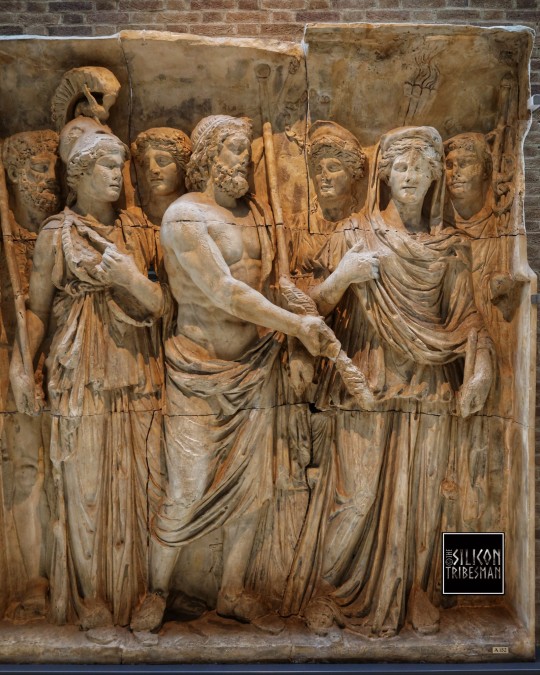
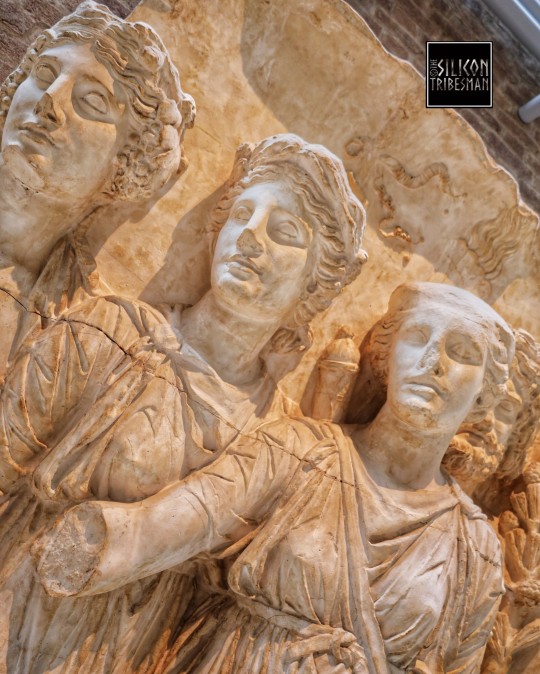

Roman Gods And Goddesses of the Countryside, Arch of Trajan at Beneventum, 114 CE
These gods and goddesses represent the prosperity of the countryside: Bacchus, god of the vine with his thyrsos (a fennel-stalk staff); Ceres, goddess of corn and the harvest, with a torch; Diana, goddess of hunting and wild animals; and Silvanus, god of woods and fields, who holds a pine branch (in situ, west side, attic).
Ashmolean Museum, Oxford
#roman gods#roman goddess#roman deities#roman belief#roman villa#roman farms#roman countryside#countryside#nature#seasons#roman emperors#roman living#roman empire#ro.an sculpture#trajan#archaeology
416 notes
·
View notes
Text

Teach Me
Ch. 7
Test days
///////////////
God, she hated test days.
The mind-numbing minutiae of it.
The waste of time that could be better spent actually learning.
The way she had to show up to do… absolutely nothing.
Pacing an ambling line from one end of the lecture platform to the other, her eyes swept the darkened room before checking her watch again.
“You have thirty seconds left to finish your thoughts for this piece, and then we're moving on to the final slide,” Lexa called out, remembering to soften her tone so as to not make the more consumed writers of the class jump nearly a foot out of their desks.
Again.
The screen overhead flipped from ‘ The Column of Trajan’ to ‘ The Arch of Constantine’, and the clock on the wall ticked on.
A few more minutes passed in relatively dull silence as Lexa mentally flowed through the lesson plans she had presented thus far, combing the downturned sea of faces and mentally shouting what she hoped the students had taken from them.
Because she wanted them to do well.
Because she measured her own success as an educator by her student's every success.
Because if she had to read one more essay this semester that contained the words “lit” or “potato quality” in reference to ancient carvings, she just might tear her own hair out.
She really hated test days.
Mind buzzing with thoughts of stylistic contrasts between High Empire versus Late, and wondering who among her pupils would draw the correct conclusions for why each piece represented on the test was chosen, Lexa felt her pocket vibrate as she settled down on the edge of the table at the head of the room.
Fishing her phone out, she glanced down and froze at the preview that flashed bright across the screen.
“That is a very tight vest you have on Professor”
Schooling her face despite the heat that bloomed bright hot in her cheeks, Lexa checked the timer she had set and barely hesitated before opening the message.
“Shouldn't you be focusing on your test?”
“Just finished a minute ago. Now I'm wasting time until class is over.”
“Shouldn't you want to leave then?” she thumbed out. As if on cue, she pressed her phone to her chest and nodded as a student traipsed up to the front and deposited their test booklet on the table before slipping out of the lecture hall without a sound. “It's a beautiful day. Go enjoy it instead of pretending to look busy.”
“But the view's so good right here…”
Straightening up from her slouched position, it felt like a herculean task to keep her eyes from beelining to the front row and exactly two seats to the left.
Instead she made another lazy loop around the dais, scanning the crowd for moving pencils (and any obvious signs of someone having fallen asleep.)
The dull squeak of graphite on paper had her winding back around to stand behind the safety of her podium.
“That's highly inappropriate. Remind me why I let you sit in the front row?” she typed back the second her hands were out of sight.
She snuck another glance out into the dimmed lecture hall and waited.
“Because I'm your very favoritest student Professor Woods,” she read when another message popped up right below it. “And because when I wear this outfit you can almost see up my dress.”
/////////////
Read on AO3
#clexa#clexa fic#Lexa#clarke griffin#clarke x lexa#teach me#prof/stu au#this is part 1 of 3 that'll be post every week#with hopefully the other 2 parts coming right after it#but the next two parts are already done
124 notes
·
View notes
Text
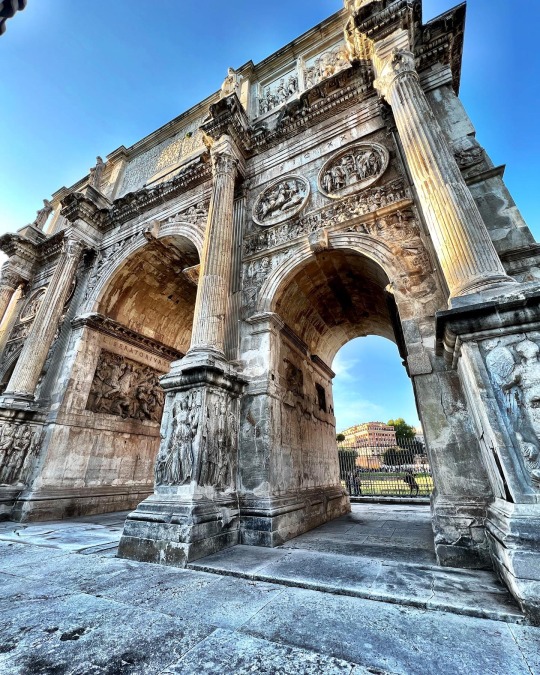
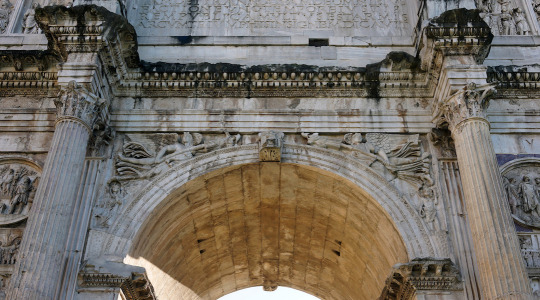
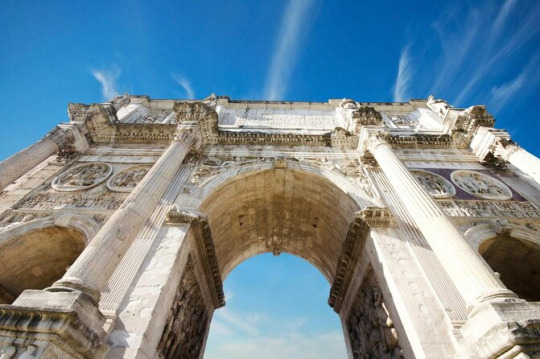
Arch of Constantine in Rome, is a triumphal arch that is located between the Palatine Hill and Celio, on the Via Triumphalis. It was erected in the year 315 to commemorate the victory of Constantine I the Great, against Maxentius in the battle of the Milvian Bridge (year 312).
Its state of conservation is extraordinary, being with the Arch of Titus and the Arch of Septimius Severus (both in the Forum) the only ones still standing today in the city of Rome.
It is curious because it was built with pieces from different buildings, such as statues taken from Trajan's Forum and reliefs in which Marcus Aurelius appears distributing bread to the poor, and Trajan represented after his victory in Dacia. The monument is made up of three arches and is 21 m high and 25 m wide.
604 notes
·
View notes
Text

Marble portrait head of the Emperor Constantine I. Roman ca. 325–370 CE. x
Constantine the Great was the first Christian emperor of Rome, and his reign had a profound effect on the subsequent development of the Roman, later Byzantine, world. By 325 he had succeeded in reunifying the empire, having defeated the last of his former tetrarchic colleagues, the eastern emperor Licinius. He thereafter aimed to establish a new dynasty and to found a new capital, named Constantinople after himself. Christianity played an important role not only in Constantine’s personal life and success, but also in the program of reform and renewal that he had planned for the Roman Empire. Although the court and administration no longer resided at Rome, Constantine was careful not to neglect the old imperial city and adorned it with many new secular and Christian buildings. The most famous of these is the triumphal arch, the Arch of Constantine, which still stands near the Colosseum. Similarly, the fragments of a colossal statue that now adorn the courtyard of the Museo del Palazzo dei Conservatori in Rome, probably once stood in imposing grandeur in the main hall of the Basilica of Maxentius, a building that was completed by Constantine. Both of these works contain re-used material from earlier monuments, a practice that was not only economical but probably was also intended to shed reflected glory of the emperor by associating his reign in a very direct and practical way with that of famous “good” emperors from the past. The long face, neatly arranged hairstyle, and the clean-shaven appearance of this portrait head are a deliberate attempt to evoke memories of earlier rulers such as Trajan, who in the later third and fourth centuries was seen as an ideal example of a Roman emperor. Certainly, by the time that the head was set up, as part of either a bust or, more probably, an over life-sized statue, Constantine had adopted an official image that was intended to set him apart from his immediate predecessors.
20 notes
·
View notes
Note
hiii congrats on 400 i love ur blog!!
i have a headcannon that jason takes architecture in new rome university to pursue his vision of rebuilding temple hill. can i request an architecture student!jason fic? maybe some engineering student!leo tossed in as well idk haha tysmmm! ~~♡
ೃ⁀➷ Screws and Ceramicsೃ⁀➷

author's note: I'm sorry this took so long!! I'm back on my writing spree finally!!





“The exterior facade of the Colosseum consists of four levels, with the bottom three levels composed of 80 arches each. Structurally speaking, the arches make possible the immense size of the structure-”
Jason adjusted his glasses as he was trying his hardest to copy his notes down, as quickly as possible, the professor was going kinda fast but Jason didn't blame him.
They have so much coursework for this semester. New Rome coursework for architecture students included the basics of Colosseum construction, Parthenon preservation and the surprising malleability of marble.
Currently Jason was learning the basics of Colosseum construction. It wasn't easy, but Jason was willing to give it his all, he even asked Annabeth for advice. His dream was to redesign temple hill, after he was done finishing the minor gods project. The only way he could get the permission to professionally redesign the structure of a long existing camp, was to get a degree to prove that he was worthy enough.
Romans do not play when it comes to buildings. Moreover, he didn't want anyone to call him a “nepo baby” and that he only got to design temple hill because he was Jupiter's son. Annabeth had already moved up levels of the architecture courses, and graduated with Percy. Jason was two years younger, by the time Annabeth had graduated, he was only then finishing highschool in California, so he still had a long way to go. Thankfully, Leo took engineering in NRU, so Jason had great company.
“Man, all these Romans do is yap yap and yap in cursive. They know nothing about how engineering works.” Leo babbled, complaining about his professor, who was a legacy of vulcan.
Jason scowled. “What are you implying, Leo? That we Romans know nothing about building stuff? That's the biggest stretch I've ever heard. They've built the Colosseum, the Roman Forum, the Domus Aurea, the Pantheon, Trajan's Column, Trajan's Market, the Catacombs, the Circus Maximus, the Baths of Caracalla, Castel Sant'Angelo, the Mausoleum of Augustus-”
“Woah woah calm down. I see you've clearly learnt all the names of those Roman buildings for your upcoming exam, thank me later for discreetly testing you. Looks like you really know your stuff dude. Romans are still mid engineers though” Leo winked. Jason stared at him bewildered. He hadn't even realized that he spit out all those Roman building names, he'd been up all night studying them.
“Iuppiter te perdat, valdez” (may Jupiter come at you, valdez) Jason muttered.
“Aww come on, don't go all Latin on me now, did you curse me out?” Leo questioned.
“maybe.”
“Well, whether you realize it or not, I seem to be the only one who somehow get you to apply whatever you've learnt in class dude. I mean, I've said like two sentences, and that's enough to get you to yap about Roman buildings and Latin curses” Leo laughed.
Well, he wasn't wrong.
“also you are only proving my point that Romans yap in cursive, I mean, have you seen yourself speak?” Jason gave him a pointed look.
“don't worry, it's cute.” Leo said, patting Jason's hair.
“Well, maybe i yap in cursive because I'm actually knowledgeable.” Jason replied, tersely smiling.
“a little too much of a big head but fair point.” Leo admitted.
“Anyways I'm starving. In honor of you insulting us Romans, Let's go eat some nice Roman food," Jason said, dragging Leo to the cafeteria.

“Leo, what's wrong?” Jason asked as he slipped inside Leo's dorm room. He hadn't heard from leo in a few hours now and he was getting worried.
Leo was scrambling anxiously, his hands seemed to be having minds of their own as his eyes darted around the room.
“I have like, 2 projects due tomorrow, and I swore to myself that I'd start on them early but I was having so much fun it totally slipped my mind-”
“Okay. Alright. First off, calm down. You still have like, 10 hours till your next class. You can still get it done by then, stressing out only prolongs your progress-”
“Give it a rest Dr. Phill” Jason rolled his eyes.
“I'm just trying to help”
“Well it isn't working, just letting you know, man”
“What's your project about? I'm no engineer, but maybe i could help with building the outer structure or solving machine equations to help make it work better-”
“Oh please yes. I need all the help I can get right now”
Jason smiled.
And so. The architect and engineer started their nerdy fiasco.
#pjo#pjo fandom#percy jackson#jason grace#pjo series#pjo hoo#pjo hoo toa#leo valdez#valgrace#pjo fanfiction#pjo fanfic#heroes of olympus#percy jackon and the olympians#fanfiction#fanfics#fanfic#ao3#ao3 fanfic#archive of our own#ao3 writer
32 notes
·
View notes
Text

Arch of Trajan - Timgad, 2022
#picofthenight#travel#algeria#original photographers#photographers on tumblr#ancient architecture#roman architecture#roman ruins#archeology#roman arch#photoofthenight#landscape photography#landscapes
56 notes
·
View notes
Text


History of the world's most famous front door
Downing Street has been the official residence of the UK's Prime Minister since Sir Robert Walpole moved in in 1735. It was originally No. 5 Downing Street until the houses were renumbered in 1779. Since 1997 the Prime Minister's private apartment has actually been above No. 11 Downing Street.
The original six-panelled Georgian-style front door was fitted in 1770's. It was made from black oak and featured a centre door knob, lion head door knocker and brass letter plate which bore the inscription "First Lord of the Treasury". Following an IRA mortar attack on Downing Street in 1991, the oak door was replaced by a blast-proof steel door of the same design. The brass letterbox today is only decorative... so you can't post a friendly greeting card through the door anymore. There are actually two front doors, which are swapped over when they need repainting. The original wooden door is now stored at The Churchill Museum.
In 1908, PM Herbert Asquith had the door painted green. Apparently the Prime Minister’s wife Margot Asquith complained that the building was "liver-coloured and squalid and lacked the landmark qualities of Marble Arch or the Albert Memorial."
Since renovation work carried out in 1960, the "0" numeral of No. 10 has been at a 37° angle. This puzzled me for many years. I finally got an answer when I was temporarily working for the Ministry of Silly Walks in Whitehall in the 1990's. It seems the zero is actually a capital letter "O" taken from the Roman Trajan alphabet, the font used by the Ministry of Works used at the time. (This answer does not satisfy me completely, but it is the best I can find.)
The door to 10 Downing Street can not be opened from the outside. A security officer is on duty at all times inside the door, who monitors who is approaching via cameras and grants access.
Larry the Cat, Chief Mouser to the Cabinet Office has his own private entrance to No. 10. He is the first Downing Street cat to have this privilege. However, Larry only uses the cat-flap when he is on an emergency call out. He generally uses the front door, which is more befitting for a cat of his importance. Larry has served longer in Downing Street than Margaret Thatcher, Sir Winston Churchill or Benjamin Disraeli.
64 notes
·
View notes
Text




A behind the scenes look at the Gladiator II set from a member of the Gladiator II Malta team
It seems they tried to replicate the Arch of Trajan
Photos by guljaholland
4 notes
·
View notes
Text

The oldest market in the world (2)
Trajan's Market , Rome Remains of buildings and temples, streets and alleys, columns, arches and carved reliefs adorning a wonderful frieze in the market of Trajan's (photo). The oldest market in the world which at the time contained more than one hundred and fifty shops! . It was built in the 2nd century BC, by the most famous architect of the time - Apollodorus of Damascus. The complex included 150 food, flower, jewelry, and wool stores. The shops were decorated with mosaics depicting the goods offered for sale.
Photo credit : https://www.instagram.com/p/C2NM82jsuqL/
3 notes
·
View notes
Text
Modern History: Ancient Roman Aqueducts
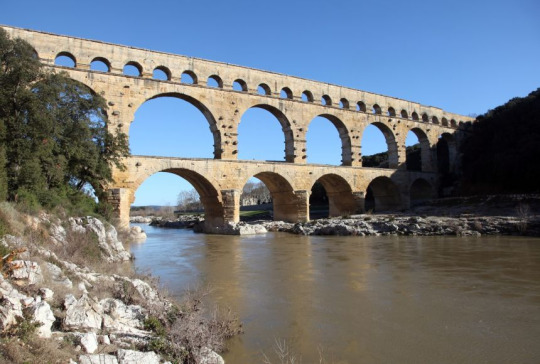
The Roman Empire is known for its impressive aqueduct system, which transported water over long distances to support their cities. This early engineering marvel laid the groundwork for modern water supply systems and emphasized the importance of efficient water distribution. Lessons from these aqueducts continue to inform water management practices today.
Roman aqueduct systems were built over a period of about 500 years, from 312 B.C.E. to C.E. 226. Both public and private funds paid for construction. The Roman aqueduct was a channel used to transport fresh water to highly populated areas. Aqueducts were amazing feats of engineering given the time period. Though earlier civilizations in Egypt and India also built aqueducts, the Romans improved on the structure and built an extensive and complex network across their territories.
High-ranking rulers often had them built; the Roman emperors Augustus, Caligula, and Trajan all ordered aqueducts built. Aqueducts required a great deal of planning. They were made from a series of pipes, tunnels, canals, and bridges. Gravity and the natural slope of the land allowed aqueducts to channel water from a freshwater source, such as a lake or spring, to a city.
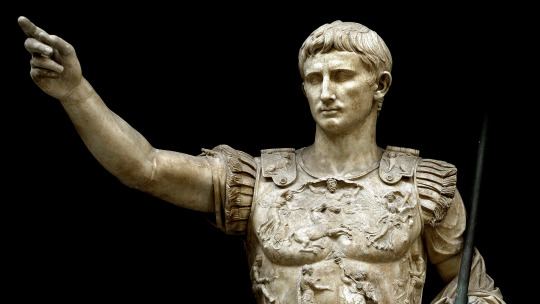
As water flowed into the cities, it was used for drinking, irrigation, and to supply hundreds of public fountains and baths. The most recognizable feature of Roman aqueducts may be the bridges constructed using rounded stone arches. Some of these can still be seen today traversing European valleys. The capital in Rome alone had around 11 aqueduct systems supplying freshwater from sources as far as 92 kilometers away (57 miles).
Ancient Roman aqueducts, a marvel of engineering from over two millennia ago, hold significant relevance to contemporary water-related issues. For example, Roman aqueducts have been relevant nowadays demonstrating the feasibility of transporting water over long distances through complex networks of channels and pipes. This engineering legacy has directly influenced modern water supply systems and the design of pipelines and aqueducts used today.

In short, Roman aqueducts were a system of water supply and distribution constructed by the ancient Romans. These aqueducts were an intricate network of channels, pipes, and tunnels designed to transport fresh water from natural sources, such as springs and rivers, to cities, towns, and industrial facilities throughout the Roman Empire. Roman aqueducts were essential for sustaining the growth and development of Roman cities, as they provided a reliable source of clean water for drinking, sanitation, and various industrial processes.
3 notes
·
View notes
Text
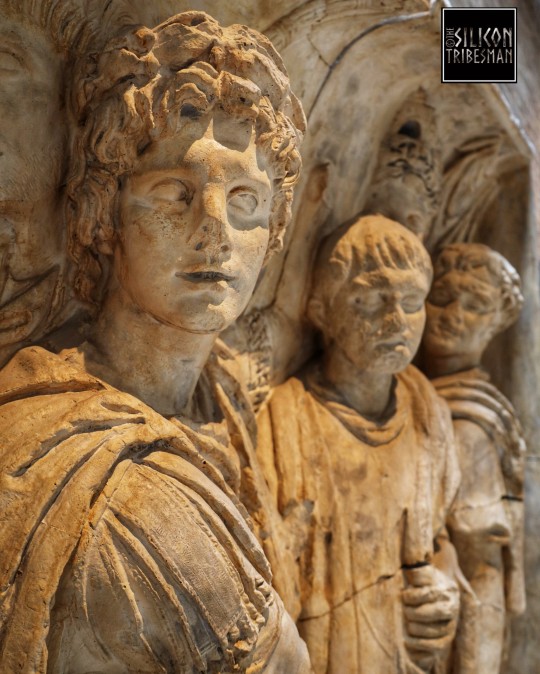


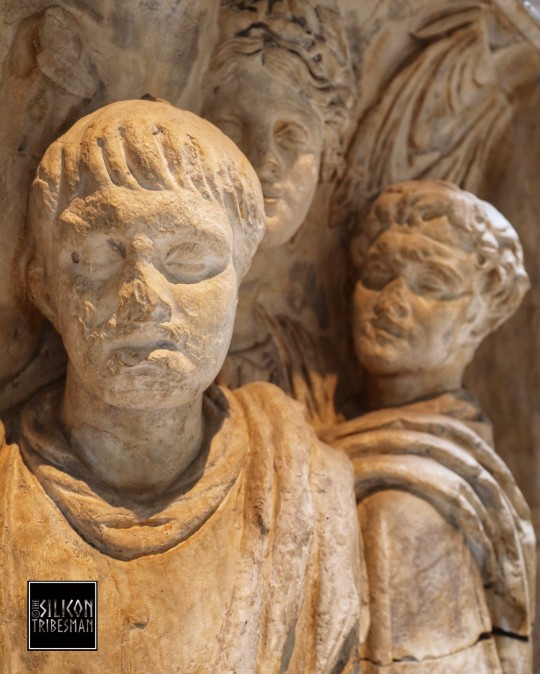
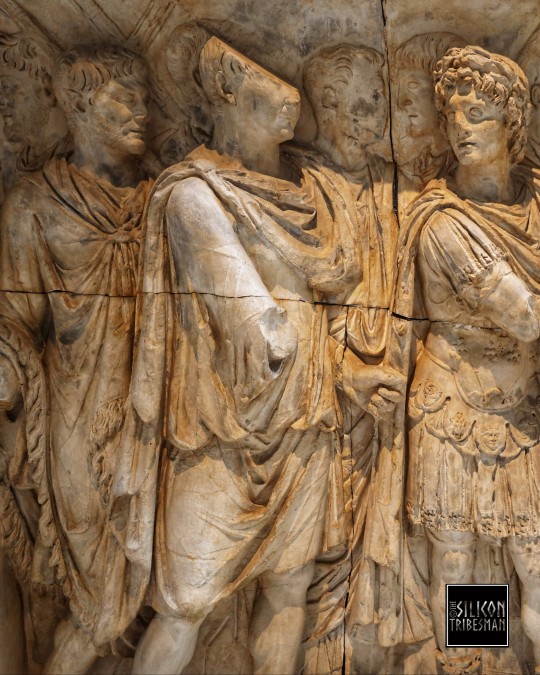

Trajan Recruits Soldiers. Arch of Trajan at Beneventum, 114 CE
A cuirassed military god in the centre presents a recruit to the roman emperor. The new soldier stands feet together: his height is being measured by a wooden frame held by the soldier on the right (in situ, west side, middle zone)
Ashmolean Museum, Oxford
#roman#romans#roman empire#roman army#roman soldiers#roman sculpture#roman craft#roman statue#roman society#trajan#ashmolean#archaeology#relic#ancient cultures#roman emperors
246 notes
·
View notes